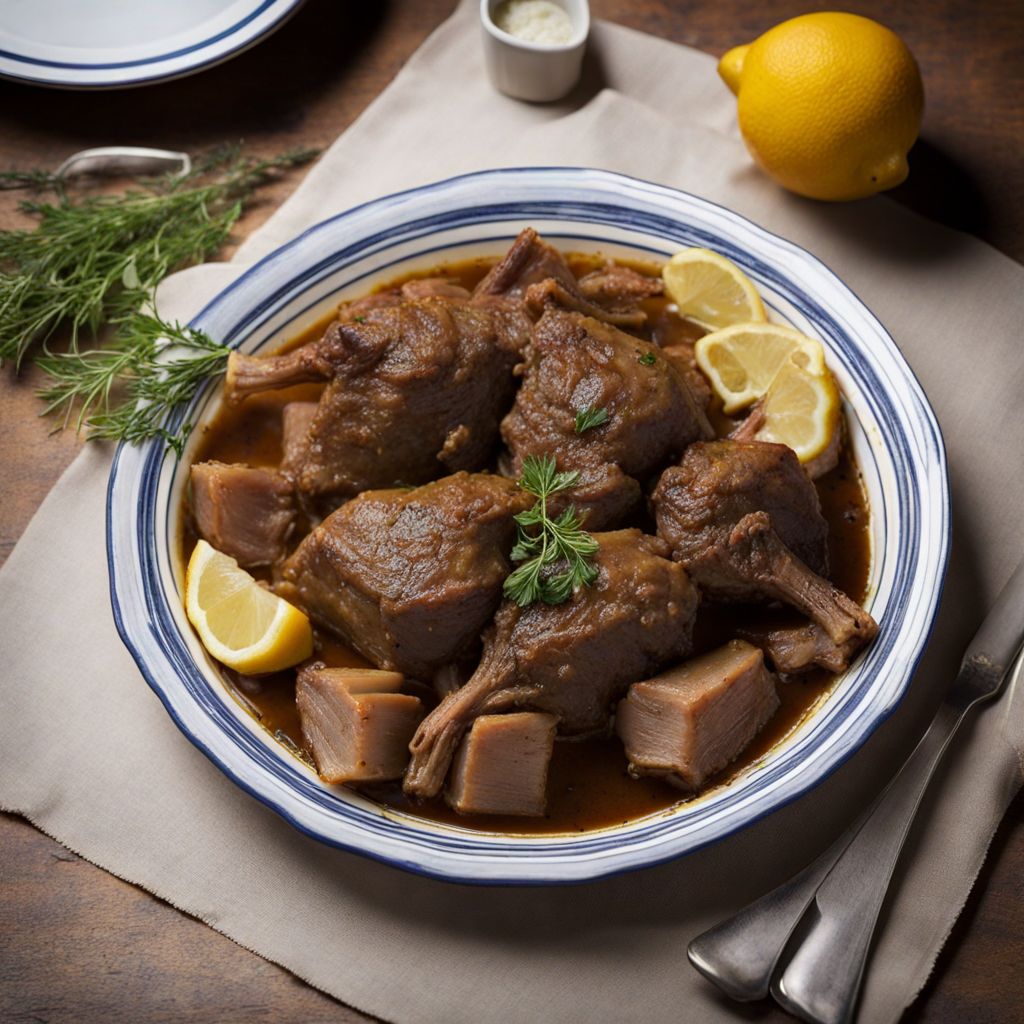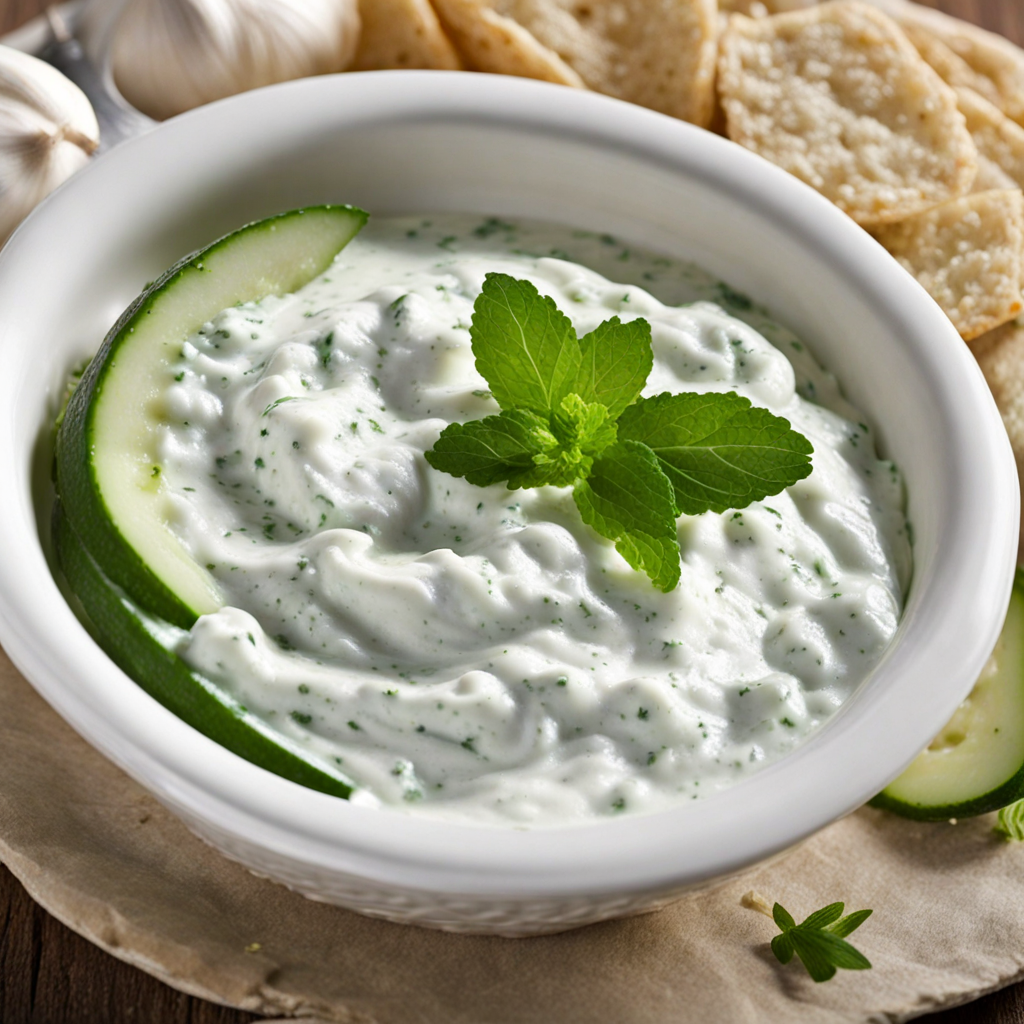Souvlaki
Souvlaki is a beloved dish that originates from the Mediterranean, particularly popular in Cyprus. It consists of small skewers of marinated meat, typically pork, chicken, or lamb, that are grilled to perfection. The meat is often seasoned with a blend of aromatic spices and herbs, such as oregano, garlic, and lemon, which infuse every bite with a burst of flavor. The grilling process adds a delightful smoky char that enhances the overall taste, making it a favorite among locals and visitors alike. In Cyprus, souvlaki is often served with warm pita bread, which serves as a perfect vessel for the succulent meat. Accompanying the dish are various garnishes like fresh tomatoes, onions, and parsley, adding a refreshing crunch. A drizzle of tzatziki sauce—made from yogurt, cucumber, garlic, and olive oil—completes the experience, providing a creamy and tangy contrast to the savory grilled meat. This combination of textures and flavors creates a harmonious symphony that is both satisfying and invigorating. Enjoying souvlaki is not just about the food; it’s also about the experience. It is commonly served as street food, allowing you to savor it on-the-go or during a casual meal with friends. The communal nature of sharing skewers and the vibrant atmosphere of Cypriot eateries make it an ideal dish for social gatherings. Whether enjoyed at a seaside tavern or a bustling market, souvlaki embodies the warmth and hospitality of Cypriot culture, inviting you to indulge in its delicious simplicity.
How It Became This Dish
The History of Σουβλάκι in Cyprus #### Origins: The Culinary Roots The journey of Σουβλάκι (souvlaki) in Cyprus is a flavorful narrative that embodies the island's rich cultural tapestry. While the term "souvlaki" is often associated with Greece, it has deep roots in the culinary traditions of Cyprus, where it has evolved into a beloved dish with unique local characteristics. The origins of souvlaki can be traced back to ancient times, with references to skewered meat found in texts dating back to the 5th century BC. The ancient Greeks enjoyed various forms of grilled meat, and these practices likely influenced later culinary developments in the region. In Cyprus, the tradition of cooking meat over an open flame can be linked to the island's pastoral lifestyle, where sheep and goats were raised for their meat. The Cypriots swiftly adopted this method, embracing the concept of skewering small pieces of marinated meat for grilling. #### Cultural Significance: A Symbol of Unity In Cyprus, souvlaki transcends mere sustenance; it is a symbol of cultural identity and community. Traditionally enjoyed during family gatherings, celebrations, and festivals, souvlaki is often associated with communal eating and sharing. The act of gathering around a grill, where the tantalizing aromas of marinated meat fill the air, fosters a sense of togetherness that is intrinsic to Cypriot culture. Souvlaki also plays a role in the island's social fabric, bridging cultural divides. The dish is popular among various communities in Cyprus, regardless of ethnic background. Whether enjoyed at a local taverna or prepared at home, souvlaki brings people together, reinforcing the values of friendship and hospitality that are central to Cypriot life. #### Development Over Time: A Culinary Evolution As Cyprus navigated through centuries of various influences—such as Ottoman, British, and Greek—so too did its culinary landscape, and souvlaki was no exception. The Ottoman Empire's presence in the region contributed to the popularity of skewered meats, which were often seasoned with a variety of spices and herbs. This infusion of flavors allowed for the evolution of souvlaki into a dish that is both familiar yet distinctively Cypriot. During the British colonial period (1878-1960), the culinary scene in Cyprus underwent further transformations. The British brought with them a range of culinary practices, and the local cuisine began to incorporate new ingredients and cooking methods. This era saw the rise of fast food culture in urban areas, with souvlaki emerging as a popular street food option. Vendors began to sell souvlaki from small stalls, making it accessible to a broader audience and cementing its status as a favorite among locals and tourists alike. In the late 20th century, as globalization transformed culinary landscapes, souvlaki found its way into international cuisine. Variations of the dish began to appear in restaurants around the world, often adapted to suit local tastes. However, in Cyprus, the traditional preparation of souvlaki remained largely unchanged, highlighting the importance of authenticity in preserving cultural heritage. #### The Souvlaki Experience: Ingredients and Preparation The classic Cypriot souvlaki is typically made with marinated chunks of pork, chicken, or lamb. The marinade is crucial to achieving the dish's signature flavor; it often consists of olive oil, lemon juice, garlic, oregano, and other local spices. After marination, the meat is skewered and grilled over charcoal, which imparts a smoky aroma that elevates the dish. Souvlaki is commonly served with pita bread, fresh vegetables, and a variety of sides, including tzatziki (a yogurt-based sauce), salad, and homemade fries. The combination of these elements creates a harmonious balance of flavors and textures, making souvlaki a satisfying and wholesome meal. In recent years, the rise of health consciousness among consumers has led to innovative variations of souvlaki, with alternatives such as grilled vegetables and plant-based proteins being offered. However, the traditional version remains a staple, deeply entrenched in the island's culinary identity. #### Modern-Day Souvlaki: A Culinary Icon Today, souvlaki remains a culinary icon in Cyprus, beloved by both locals and visitors. Its presence is ubiquitous, from family-run tavernas in quaint villages to bustling urban eateries. The dish has also gained recognition beyond the island, with many Cypriot restaurants worldwide featuring souvlaki on their menus, introducing global palates to its deliciousness. In recent years, culinary festivals celebrating traditional Cypriot dishes have further elevated souvlaki's status. These events often include cooking demonstrations, tastings, and competitions, showcasing the diverse methods and flavors associated with the dish. Such initiatives not only promote the cultural significance of souvlaki but also encourage younger generations to embrace their culinary heritage. #### Conclusion: Souvlaki as a Cultural Legacy The history of souvlaki in Cyprus is a testament to the island's resilience, adaptability, and rich cultural heritage. From its ancient origins to its modern-day iterations, souvlaki has remained a vital part of Cypriot life, symbolizing unity and community. As the world continues to evolve, so too will the interpretations of this beloved dish, but its essence—a celebration of flavors, togetherness, and tradition—will forever endure. In the end, enjoying souvlaki is not merely about savoring a delicious meal; it is an invitation to partake in the rich narrative of Cyprus—a story woven through time, culture, and shared experiences. Each bite of souvlaki serves as a reminder of the island's history, its people, and the culinary traditions that bind them together.
You may like
Discover local flavors from Cyprus







